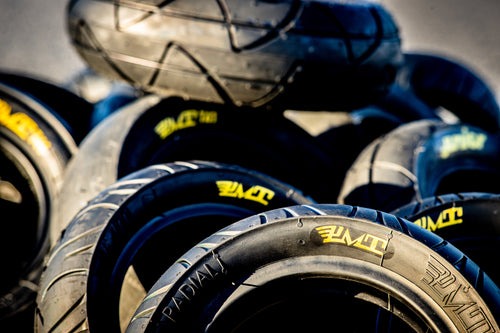E-scooters have become a favorite way to travel, with convenience and being environmentally friendly at urban commutes. Though several riders pay attention to speed, battery capacity, and appearance, there is an important factor that is commonly left out of consideration: tire pressure. The tires on e-scooters should be properly inflated to significantly improve performance, increase range, and provide safety. In this blog, we will discuss the significance of e-scooter tire pressure, how to keep it, and its effect on your riding experience.
Understanding Tire Pressure
Tire pressure is the level of air in the tire. It is expressed in pounds per square inch (PSI) and is vital for the proper performance of your e-scooter. Every tire should have a recommended pressure level, which can be found on the tire sidewall or in the user guide. Getting the right tire pressure is important for various reasons, such as safety, performance, and comfort.
Why Tire Pressure Matters
Safety
Correct tire pressure is essential for safety. Under-inflation can result in poor handling, longer stopping distances, and greater susceptibility to blowouts. Overheating tires cause possible tire failure when they are not properly inflated. Over-inflated tires, on the contrary, can cause a rough ride, less grip, and a greater risk of punctures.
Performance
Tire pressure has a direct impact on your e-scooter’s performance. When the tires are at the recommended PSI, they have the best traction and responsiveness. This translates into improved control on turns and faster acceleration. The opposite is true when tire pressure is not accurate; it makes your e-scooter slower to respond and less fun to ride.
Range
Your e-scooter range is how far you are able to go on one charge. Your tire pressure does have a great influence on this range. Your tires should be properly inflated to make less rolling resistance, which means less energy for the battery. That way, you will not run out of battery as quickly as you might expect. Using the proper tire pressure reduces rolling resistance so that you are able to get the most out of your e-scooter’s range.
The Effects of Low Tire Pressure
Low tire pressure can have a number of adverse impacts on your e-scooter ride:
Reduced Efficiency: Increased rolling resistance comes with low pressure, which forces the motor to exert more effort and suck the battery dry faster.
Poorer Handling: Under-inflated tires tend to cause loss of control, particularly in turns or sharp braking.
Accelerated Wear: Inflated tires will wear unevenly and require premature replacement.
The Impact of High Tire Pressure
While it may seem that higher tire pressure would be better, over-inflated tires can also be problematic:
Harsh Ride: Excessive pressure can lead to a stiff ride, making it uncomfortable to navigate bumps or uneven surfaces.
Reduced Traction: Over-inflated tires can lose contact with the ground, reducing grip and stability.
Greater Risk of Damage: Higher pressure has the potential to make tires prone to punctures and blowouts, particularly when driving over rough terrain.
Maintaining Proper Tire Pressure
With this newfound appreciation for tire pressure, it is important that you learn how to properly maintain it. The following are some helpful tips that can guide you on how to maintain your e-scooter tires in top condition:
1. Check Tire Pressure Regularly
Monitoring tire pressure regularly is important. If possible, inspect your tires before every ride or at least once a week. Use a consistent pressure gauge to take the reading of PSI. If your e-scooter has a display screen, it might show live tire pressure readings.
2. Inflate to Suggested Levels
Refer to the manufacturer’s guidelines for the recommended tire pressure range. Most e-scooter tires will have this information printed on the sidewall. Inflate your tires within this range for optimal performance and safety. If you’re unsure, a common range for e-scooter tires is between 30-50 PSI, but always verify with your specific model.
3. Use a Quality Pump
Invest in a high-quality pump compatible with your e-scooter tires. Floor pumps with pressure gauges are best for precisely inflating tires to the required PSI. On-the-go adjustments can also be done with portable hand pumps, though they might not achieve the same level of accuracy.
4. Keep Track of Temperature Fluctuations
Tire pressure will vary with changes in temperature. When temperatures go up, so does tire pressure; it decreases in cold temperatures. Take note of this during seasonal changes. Adjust accordingly to keep the levels recommended.
5. Check for Damage
As you check your tire pressure, please go ahead and examine your tires for any apparent damage, including cuts, punctures, or wear. If you find any problems, resolve them immediately to prevent further issues.
The Benefits of Proper Tire Pressure
Improved Safety
By keeping your tires inflated with the proper pressure, you greatly improve your road safety. Properly inflated tires give you better traction, stability, and control, meaning you are less likely to have accidents.
Better Performance
With optimal tire pressure, your e-scooter will have its best performance. You’ll get faster acceleration, better handling, and a more responsive ride, and you’ll enjoy your trips more.
Longer Battery Life
Proper tire pressure is directly responsible for your e-scooter’s range. By reducing rolling resistance, you’ll save battery power and cover more miles per charge.
Longer Tire Life
Checking and maintaining tire pressure on a regular basis can also extend the life of your tires. Properly inflated tires will wear more evenly, lessening the necessity for premature replacements and saving you money in the long term.
Myths Surrounding Tire Pressure
There are a number of misconceptions surrounding tire pressure that can result in improper maintenance. Here are a few myths dispelled:
Myth 1: “If the Tire Looks Fine, It’s Fine”
Several riders feel that since their tires look okay, they don’t need to check tire pressure. Tires may leak air gradually over time, and visual checks alone cannot guarantee proper inflation.
Myth 2: “Higher Pressure is Always Better”
Although tempting to fill tires to maximum pressure for best performance, it can result in a rough ride and less grip. Always follow the manufacturer’s guidelines on tire pressure.
Myth 3: “I Only Need to Check Tire Pressure When It’s Flat”
You should check tire pressure as part of your routine maintenance, not only when you see a flat tire. Regular monitoring prevents problems before they happen.
What to Do If You Experience Issues
If you notice that your tire pressure is always low or high, it is important to take the matter into action immediately:
Inspect for Leaks: If your tires are losing air repeatedly, check for punctures or leaks. You can employ soapy water to detect leaks; bubbles will appear wherever air is leaking out.
Consult a Professional: If you’re unsure about the condition of your tires or how to proceed, seek advice from a professional. They can provide valuable insights and assistance.
Consider Upgrading Tires: If your current tires are performing poorly or are not suitable for your riding style, consider upgrading to a better option that meets your needs.
Conclusion
E-scooter tire pressure is an important part of your riding experience that can never be neglected. Keeping the proper pressure improves safety, enhances performance, and increases your e-scooter’s range. Regular tire pressure checks and compliance with the manufacturer’s guidelines help you have a smoother and safer ride.
As you make your way through your city streets, don’t forget that the unheralded champion of your e-scooter’s performance is the tire. Regular tire care not only leads to an improved ride but also to maximizing your e-scooter investment. At Wyrd Ryds, we’ve got you covered with top-quality e-scooter tires and maintenance essentials to keep your ride smooth and safe. So, before you take off, take a quick look at those tires and trust Wyrd Ryds to help you ride with confidence!



